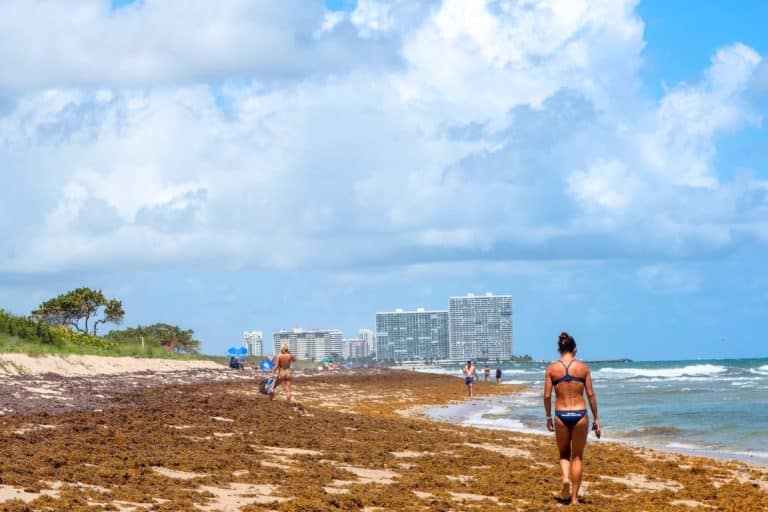Visitors to Florida beaches this summer are being warned by authorities that there may be unwanted algae on the beaches.
Fishing and swimming are made more difficult by the seaweed that washes up with each breaking wave.
Miles of algae are expected to wash up on South Florida beaches this summer.
It began to become a reality after a video showed significant quantities of foul-smelling kelp floating offshore and near Marathon’s Cocoplum Beach.
Check out the full video on foxweather.com

Because of its proximity to the Gulf Stream, sargassum tends to be thicker in the nearshore currents of the Florida Keys.
Sporadic onshore currents often bring stains to the shore, which can make for some unpleasant beach days as people have to walk over seaweed and occasionally notice an odor that smells like rotten eggs.
Although seaweed is not dangerous to humans, it can nevertheless have an impact, according to the Florida Department of Health. Small animals that live in the sargassum can cause skin rashes and blisters.
The algae can also contain heavy metals such as arsenic and cadmium, so health experts warn against eating it.
Brown algae are considered beneficial to many marine animals. Scientists believe the deposits provide food and shelter for fish, crabs, shrimp and other smaller invertebrates.
Some beachgoers do not seem to care about the seaweed, while others do not want to get near it.
Regardless of how anyone feels about it, the issue needs to be resolved this year.
The Sargassum bloom is so large that it can be seen from space from beaches in Haulover, Hollywood, and Ft. Lauderdale.
According to Florida Atlantic University professor Dr. Brian LaPointe, the seaweed bloom is 13 million tons, in size and twice the size of the United States.
“It doubled in size in January, from December,” he said.
According to scientists, the cause of the algae is unclear. Although, they have been studying it since 2011.
The algae are not expected to deter many beachgoers, and it is still likely that the beaches will be crowded.

